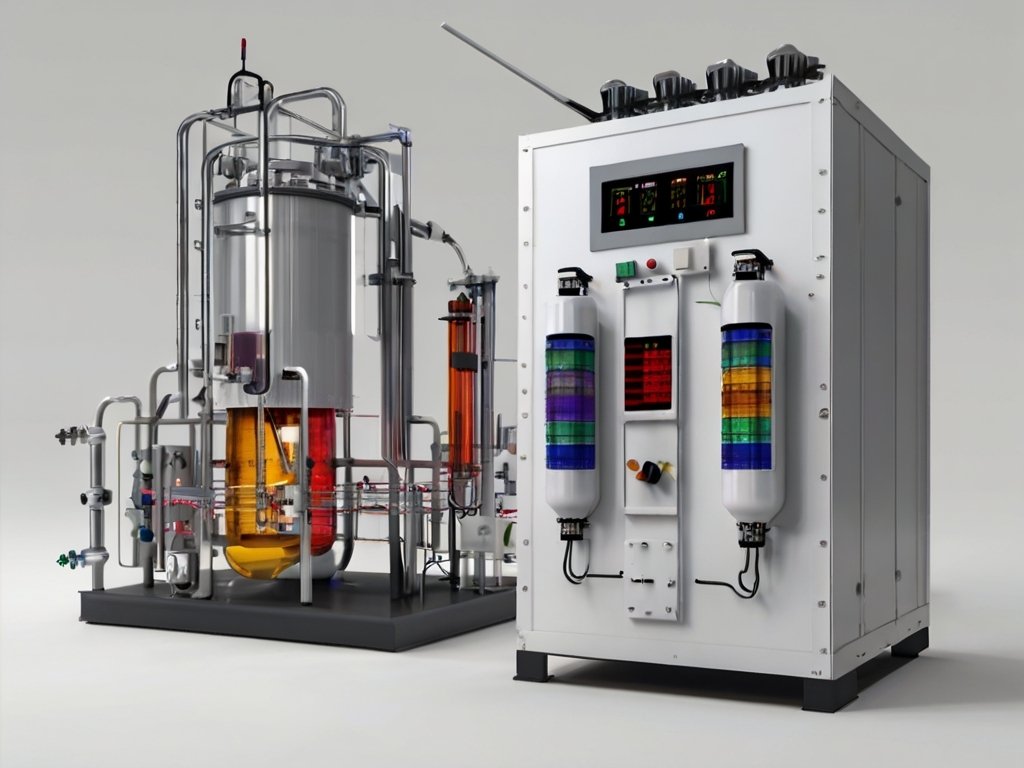Upflow Anaerobic Sludge Blanket (UASB) Reactor: A Sustainable Solution for Wastewater Treatment
The Upflow Anaerobic Sludge Blanket (UASB) reactor is a specialized anaerobic treatment technology widely used for the treatment of industrial effluents, municipal wastewater, and agricultural wastes. Developed in the 1970s, the UASB reactor has since gained recognition
as a cost-effective, energy-efficient, and environmentally sustainable solution for organic waste treatment, particularly in regions with limited access to resources and infrastructure.

Key Components and Operating Principles:
The UASB reactor consists of a vertical cylindrical vessel divided into several functional zones:
Influent Distribution Zone:
Wastewater enters the reactor from the bottom and is evenly distributed across the reactor's cross-section to ensure uniform flow and hydraulic conditions.
Sludge Blanket Zone:
The heart of the UASB reactor is the sludge blanket, a dense aggregation of anaerobic microorganisms suspended in the wastewater. This blanket acts as a biologically active biomass layer where organic matter undergoes anaerobic digestion, leading to the production of biogas (primarily methane and carbon dioxide).
Gas-Solid Separation Zone:
Biogas produced during anaerobic digestion accumulates as bubbles within the sludge blanket and rises towards the top of the reactor. Gas-solid separation devices, such as gas collectors or baffles, prevent the entrainment of sludge particles in the biogas and promote their retention within the reactor.
Effluent Collection Zone:
Treated wastewater exits the reactor from the top and is collected for further processing or discharge. Effluent quality is typically monitored to ensure compliance with regulatory standards before release into the environment.
Advantages of UASB Reactors
High Treatment Efficiency
UASB reactors are capable of achieving high levels of organic matter removal, often exceeding 70-80%. This makes them particularly suitable for treating high-strength industrial wastewater streams, such as those generated by food processing, dairy, pulp and paper, and chemical manufacturing industries.

Biogas Generation
Anaerobic digestion in UASB reactors results in the production of biogas, a valuable renewable energy resource. Biogas can be utilized for heat and power generation, reducing dependency on fossil fuels and mitigating greenhouse gas emissions.

Low Operating Costs
Compared to aerobic treatment technologies, UASB reactors have lower energy requirements since they do not require mechanical aeration.
Additionally, they produce less excess sludge, reducing the costs associated with
sludge handling and disposal.

Compact Footprint
UASB reactors have a compact design and high volumetric loading rates, allowing for significant space savings compared to conventional aerobic treatment systems. This makes them suitable for retrofitting into existing wastewater treatment plants or implementing in decentralized or resource-constrained settings.

Minimal Chemical Requirements
Anaerobic treatment processes in UASB reactors typically require minimal or no chemical additives, reducing the need for costly chemicals and simplifying operation and maintenance.
Challenges and Considerations
While UASB reactors offer numerous advantages, several challenges and considerations must be addressed for optimal performance:
Sensitivity to Operating Conditions
UASB reactors are sensitive to fluctuations in temperature, pH, hydraulic loading rates, and influent characteristics. Maintaining stable operating conditions is essential to ensure efficient treatment and microbial activity.
01.
Long Start-Up Period
UASB reactors may require an extended start-up period
(several weeks to months) to establish and stabilize the anaerobic microbial consortia
within the sludge blanket.
02.
Nutrient Limitations
Some anaerobic microbial consortia may require specific nutrients or trace elements for optimal growth and activity. Nutrient supplementation
may be necessary to enhance microbial performance and prevent process inhibition.
03.
Risk of Foaming and Scouring
UASB reactors are susceptible to foam formation and sludge scouring under certain conditions, which can impair reactor performance and require remedial measures such as foam control devices or changes in operational
parameters.
04.
Conclusion
The Upflow Anaerobic Sludge Blanket (UASB) reactor represents a sustainable and efficient solution for organic waste treatment, offering high treatment efficiency, biogas generation, and low operating costs. By harnessing the power of anaerobic digestion, UASB reactors contribute to resource recovery, energy generation, and environmental protection. Continued research, innovation, and practical implementation of UASB systems hold the potential to address diverse wastewater treatment challenges and promote the transition towards a circular economy and renewable energy future.
